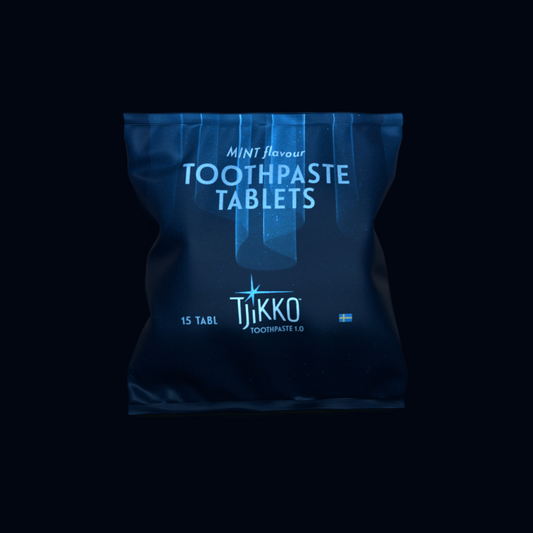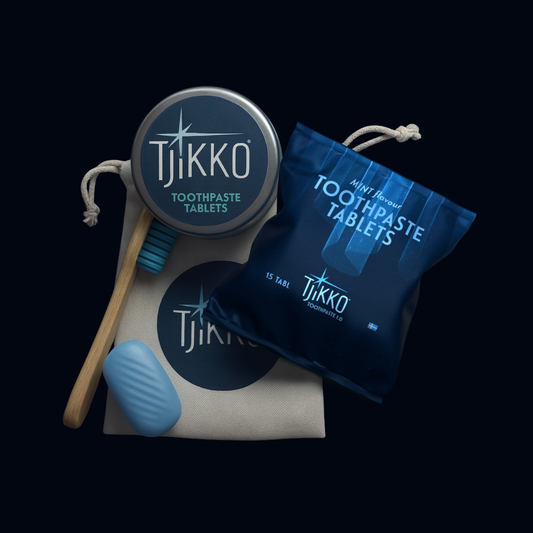Tooth decay – why we get cavities (and how to avoid them)
Loading...You've probably heard it since you were little: "Don't eat too much candy, you'll get cavities!".
And yes, there's actually a whole science behind that statement. But let's find out what cavities actually are, why some people seem to be able to live on coffee without a single filling, and how you can actually keep your teeth in tip-top shape (without completely giving up on all the good things in life).

What exactly is dental caries?
Dental caries, or “cavities” – is not a disease that you can catch like a cold, but it is caused by bacteria. The worst culprit in the drama is called Streptococcus mutans. It is a bacteria that loves sugar as much as we do, but for completely the wrong reason.
When you eat sugar, white flour, or other simple carbohydrates, these bacteria get a smorgasbord. They eat, ferment, and produce acid that, in turn, begins to eat away at tooth enamel, much like rust on metal. And yes, even natural sugars like honey and fructose can cause problems, despite their healthy reputations.
It's not just what you eat – but how often
Every time you eat sugar (or drink something sweet), an acid attack lasts for about 30 minutes.
If you often eat small snacks, or drink soda every now and then, your teeth don't have time to recover between attacks. It's like giving the enemy (the bacteria) constant reinforcements without giving your defenses (the saliva) a chance to rebuild the wall.
However, if you stick to 3–4 meals a day, saliva has the opportunity to neutralize the acid and restore balance. Saliva is not just “spit”, it is nature’s own protective fluid with buffering properties and small doses of minerals that help the enamel heal.
Bacteria vs. Defense – the tooth’s own “war”
Imagine tooth decay as a war:
On one side you have the enemy army – the bacteria. They can be of different sizes and aggressiveness.
On the other side, you have your defenses: the enamel, saliva, and your toothbrush.
A strong defensive side is characterized by:
- Hard and resistant enamel (thanks to fluoride and hydroxyapatite)
- Good saliva production with good buffering capacity
- Thorough and regular tooth brushing
But do you have a lot of aggressive bacteria, little saliva or enamel that is weaker? Then you have to be extra strategic. It is not always enough to brush away the enemy; you also have to weaken their food supply, i.e. reduce sugar and fast carbohydrates.
Can you “cure” tooth decay?
It is possible to stop a very small cavity from growing, but the exposed part of the tooth will not be able to be restored to 100%. In the case of larger cavities where cavities occur, they must be repaired. I like to stay one step ahead by preventing new cavities from forming, you do this by:
- Brush your teeth twice a day
- Avoid frequent sugar intake
- Choosing the right toothpaste
Why the choice of toothpaste actually matters
Not all toothpastes are created equal. A really good toothpaste should:
- Neutralize acid
- Prevent the growth of bacteria
- Strengthen enamel
One example is Tjikko, a toothpaste tablet based on bicarbonate, which actively neutralizes acid and lifts dirt from the surface without abrasiveness. It contains fluoride and hydroxyapatite, which strengthen enamel, as well as xylitol and isomalt, which counteract caries without feeding bacteria. Tjikko also does not use questionable sugar alcohols (which can be used by acid-producing bacteria) as most toothpastes do – this makes Tjikko a smarter solution for your teeth.





